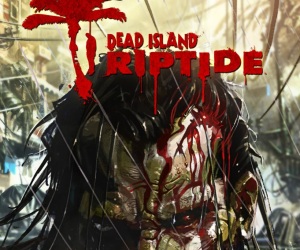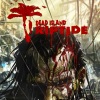 Dead Island is about beauty and horror intertwined. In its calmer moments the tropical vistas on offer are undeniably beautiful, vibrant and at odds with a burning world. The second game in the series takes us to a new island, one which once catered for wealthier society. Its richer occupants are reflected in its Mediterranean look – it is stunning, until the dead walk into view.
Dead Island is about beauty and horror intertwined. In its calmer moments the tropical vistas on offer are undeniably beautiful, vibrant and at odds with a burning world. The second game in the series takes us to a new island, one which once catered for wealthier society. Its richer occupants are reflected in its Mediterranean look – it is stunning, until the dead walk into view.
Read our interview with Dead Island: Riptide’s Creative Producer, Sebastian Reichert, here.
Back in 2011, Techland’s Dead Island was a surprise hit thanks in part to a wave of hype generated by a jaw-dropping announcement trailer, which too was a mix of splendour and decay. Developers Techland rode that wave all the way to the bank.
Dead Island wasn’t the game everyone expected, however. A relatively open first person adventure title, this was a game about quests with multiplayer at its core. Riptide isn’t exactly a huge leap forward, but it’s no cash-in either – there’s more here.
Before my hands-on time with the game came a lengthy live-demo from the game’s creators. Split into two sections, the assembled journalists were first treated to Riptide’s opening salvo. Set on a storm-rocked ship off the coast of the titular island, the player is introduced to the mechanics through a linear prologue.

In Riptide you will play as one of four survivors, each with their own uses and abilities. One such power allows the player to send the dead flying with a big boot to the rotting face, another is a ramming run which can be used to disperse crowds of enemies.
Being multiplayer focused means that the characters complement each other with certain skills, and each player can choose a speciality both before and during their games. You can focus on a particular aspect of the gameplay like combat, and then during the game you can use XP gained from spectacular kills and combos to unlock new abilities.
Among other unlockables, the Combat tree allows you to increase weapon proficiency, contains additional attacks, and reduces stamina loss while Survival lets you increase health, reduce damage and gain access to previously locked containers full of items.
The third branch of the skill tree is set aside for Fury mode. A new addition to the series, Fury is built up over time until the player is granted the ability to unleash a flourish of high powered attacks that lay waste to entire hoards. Spending XP increases your range of capabilities while the mode is activated.

Fury mode is made for melee combat, which is still emphasised in Riptide, but less so than in the original game. This time there are more guns and more ammunition littered around the vast world. In practise this doesn’t sound quite as concerning as it might to fans of the series, melee is still key here, and most importantly it’s more fun.
More fun, but that doesn’t mean it’s a total blast. Confrontations with the undead amount to little more than hammering the trigger, with only your stamina bar preventing combat from being a total grind. When it works it is fun, but more often than not you find yourself swarmed, forcing your strategy to be simple – run toward them, attack, retreat, repeat.
In the downtime between battles there is plenty to explore and a lot of trinkets to collect. Snack bars and energy drinks replenish health, there’s cash to buy new upgrades and all manner of little bits and bobs that can help with upgrading a weapon.
Riptide’s world is large but its drive is still pretty linear. Don’t get me wrong, it’s a lot more open than most shooters and linearity isn’t always bad, but the gap between destinations isn’t quite big enough to hide the fact that you’re still moving from A and B.

Taking place directly after the prologue, what I played was very early on so that may change. However, on the evidence of the later portion of the game we were shown it may not.
In chapter 8 the player (or players) must clear out a small town so a ground of survivors can move through. It’s here that we see some of the better improvements made to Riptide.
The first thing that’s noticeable is that the environments are more vertical. Up on the rooftops zombies are few and far between, giving an almost eerie silence that hangs in the air. Below is a different affair, it’s where the hoard lurks, but it’s also where the best booty is to be found.
Something else dwells beneath too, a new kind of enemy – the Drowners. These submerged zombies float in flooded areas among actually-dead corpses, meaning players are never sure which body will spring to sort-of-life. The use of water is part of Techland’s attempts to make the environment more treacherous than before. This is most obviously seen in the new dynamic weather system. Weather effects will compromise your vision and make the game more difficult either at random or when triggered by story beats and objectives within the game. The idea is that the elements will pose as much of a threat as the undead gaggle.

Dead Island is an inventive franchise with very nice core idea, but it wasn’t quite executed to its full potential. The world in which Riptide is set is heavily polished but its mechanics are not – even the new streamlined inventory system still struggles to be clear.
Riptide brings numerous good changes to the series and will no doubt please existing fans, but on this showing it may do little to tempt those new to the series. If this series is to be the kind of hit Deep Silver and Techland no doubt want it to be, then it needs to focus less on the outward beauty and more on its innards.
[nggallery id=1380]
Dead Island: Riptide will be released on April 26 in Europe and April 23 in North America – for Xbox 360, PlayStation 3 and Windows PC.






